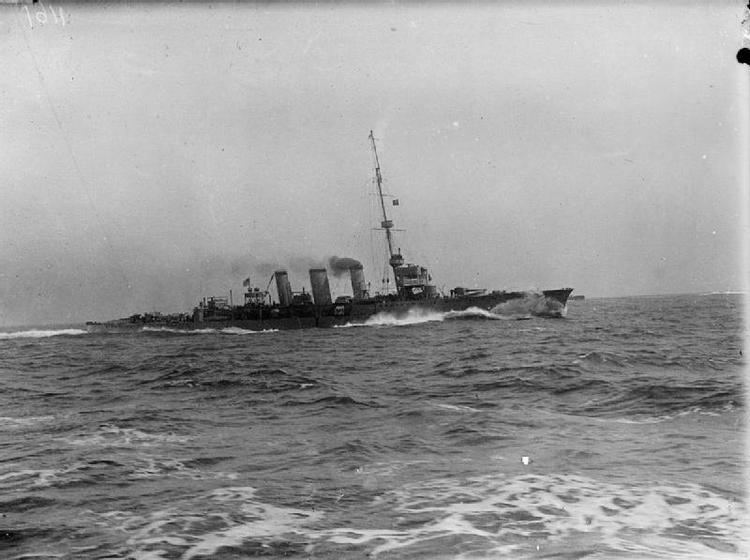Succeeded by C class Completed 8 | Preceded by Active class In commission 1914–24 | |
 | ||
Operators | ||
The Arethusa-class cruisers were a class of eight oil-fired light cruisers of the Royal Navy all ordered in September 1912, primarily for service in the North Sea. They had three funnels with the middle one somewhat larger in diameter than the others. All served in the First World War. They were found to be very cramped internally.
Contents
Design and description
The earlier scout cruisers were too slow to accomplish their intended duties of working with destroyer flotillas and defending the fleet against attacks by enemy destroyers. The primary emphasis of the Arethusa-class cruisers was a design speed of 30 knots (56 km/h; 35 mph), to allow them to lead destroyers in combat. In support of this goal, they were the first cruisers to use destroyer-type high-speed steam turbines and oil-fired boilers were chosen to save weight and increase their power to meet the specification. They retained the side protection introduced in the later ships of the previous Town class, but reverted to a mixed main armament that was a feature of the earlier ships of that class.
The ships were 456 feet 6 inches (139.1 m) long overall, with a beam of 49 feet 10 inches (15.2 m) and a deep draught of 15 feet 3 inches (4.6 m). Displacement was 5,185 long tons (5,268 t) at normal and 5,795 long tons (5,888 t) at full load. The Arethusa class were powered by four direct-drive steam turbines, each driving one propeller shaft, which produced a total of 40,000 indicated horsepower (30,000 kW) and gave a speed of about 28.5 knots (52.8 km/h; 32.8 mph). The six ships that used Parsons turbines were equipped with cruising turbines on the outer shafts, but the two ships that used Brown-Curtis turbines were not so fitted. The turbines used steam generated by eight Yarrow boilers at a working pressure of 235 psi (1,620 kPa; 17 kgf/cm2). They carried 840 long tons (853 t) tons of fuel oil that gave the ships with cruising turbines a range of 5,000 nautical miles (9,300 km; 5,800 mi) and 3,200 nmi (5,900 km; 3,700 mi) for those without, both at 16 knots (30 km/h; 18 mph).
The main armament of the Arethusa-class ships was two BL 6-inch (152 mm) Mk XII guns that were mounted on the centreline fore and aft of the superstructure and six QF 4-inch Mk V guns in waist mountings. They were also fitted with a single QF 3-pounder (47 mm (1.9 in)) anti-aircraft gun and four 21 in (533 mm) torpedo tubes in two twin mounts.
Ships
Galatea, Inconstant, Phaeton and Royalist fought in the battle of Jutland on 31 May 1916.
